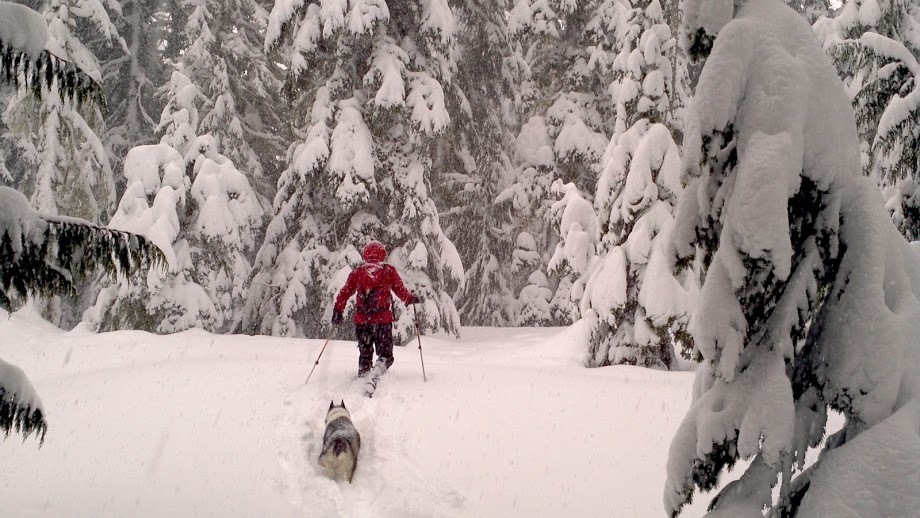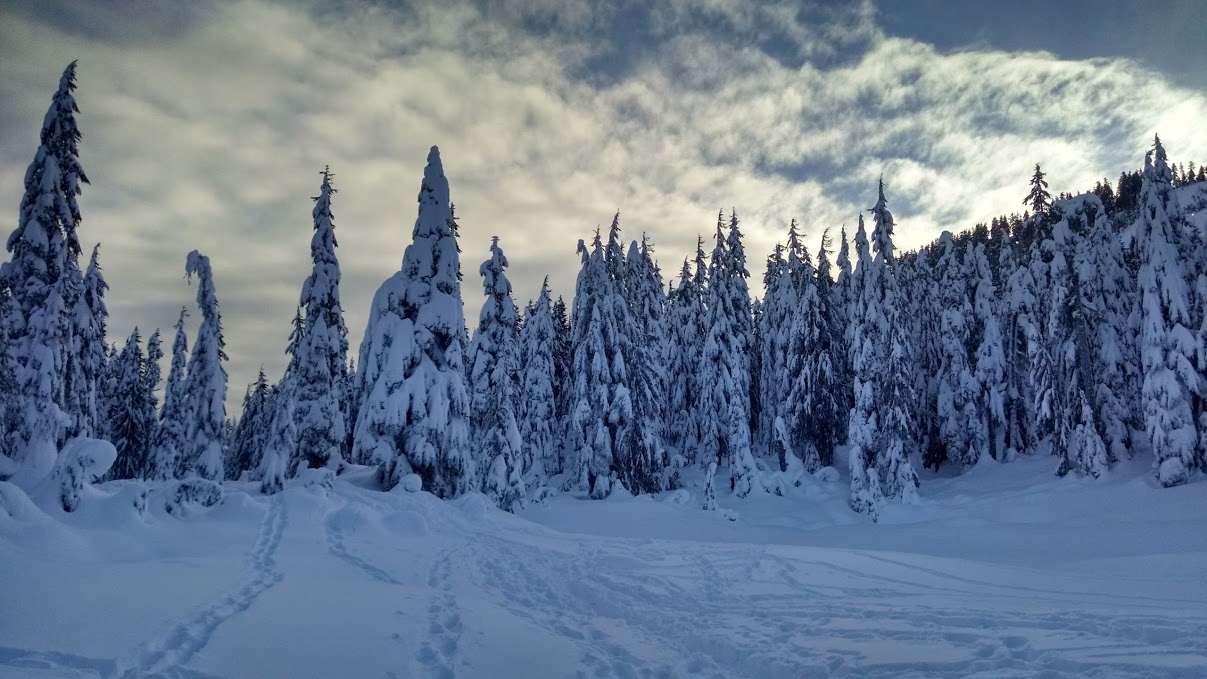ATSC 113 Weather for Sailing, Flying & Snow Sports
Wind-Sheltered Areas
Learning goal 6g: Identify and describe areas in the mountains that are likely to be wind-sheltered.
What is a wind-sheltered location and why are they less windy?
Typical wind-sheltered locations include mountain valleys and treed areas on slopes and within valleys. Valleys are sheltered from higher wind speeds aloft by the surrounding ridges and peaks, which cause friction and turbulence that dissipate the wind. Treed areas also reduce wind speeds aloft through the same mechanisms.

Alpine (high elevation, treeless) valleys are more sheltered from strong winds than ridges and peaks. If pressure-level winds for your altitude are less than 50 km/h, you'll likely have light wind speeds in valleys. However, under some conditions alpine valleys can see moderate or strong winds. Stronger winds from higher up in the troposphere are more likely to mix down into valleys in the daytime and the springtime, when the temperature profile tends to be less stable.
Thermally-driven (Learning Goal 6b) and terrain-channelled flows (Learning Goal 6m, covered later) are other possible exceptions. Overnight in particular, thermally-driven downslope flows can bring moderate winds to alpine valleys.
Lighter winds are also expected on forested slopes and valleys. In mature tall forests, strong winds virtually never make it to the forest floor. However, the treetops may be experiencing much windier conditions than you are experiencing at ground level. In strong winds, you may notice the trees swaying and creaking.
Tree bombs can be a hazard in these conditions. These are large clumps of snow suspended in tree branches that may fall and hit unsuspecting skiers. They can weigh tens of kilograms, and have a real potential to injure skiers.

Low-wind conditions make treed valleys the most weather-friendly places to camp. An additional benefit of forested valley locations that have mature (large 50+ year-old trees) is that they are generally safe from avalanches.
Keywords: mountain valleys, treed areas, tree bombs
Figure Credits
Howard: Rosie Howard
West: Greg West
Stull: Roland Stull
COMET/UCAR: The source of this material is the
COMET® Website at http://meted.ucar.edu/ of the University Corporation
for Atmospheric Research (UCAR), sponsored in part through cooperative
agreement(s) with the National Oceanic and Atmospheric Administration
(NOAA), U.S. Department of Commerce (DOC). ©1997-2016 University
Corporation for Atmospheric Research. All Rights Reserved.
NOAA: Images courtesy of National Oceanic and
Atmospheric Administration/Department of Commerce, www.noaa.gov
NASA: Images courtesy of National Aeronautics and
Space Administration, www.nasa.gov
Google: Map data (c) 2016 Google
Libbrecht: Kenneth Libbrecht, SnowCrystals.com
Garrett: Professor
Tim Garrett, University of Utah